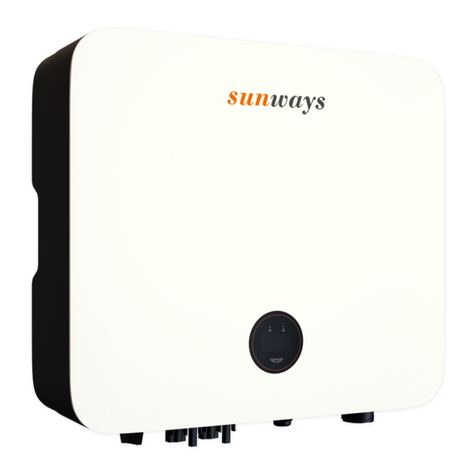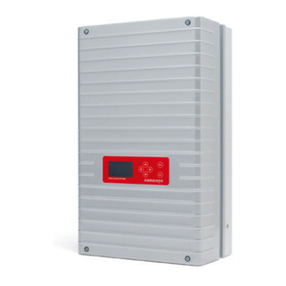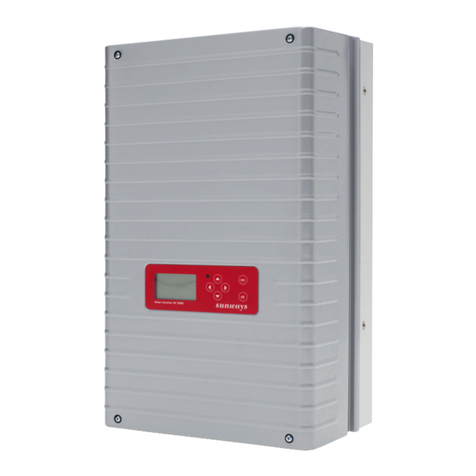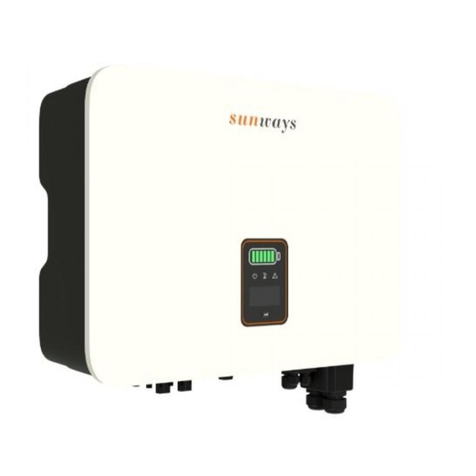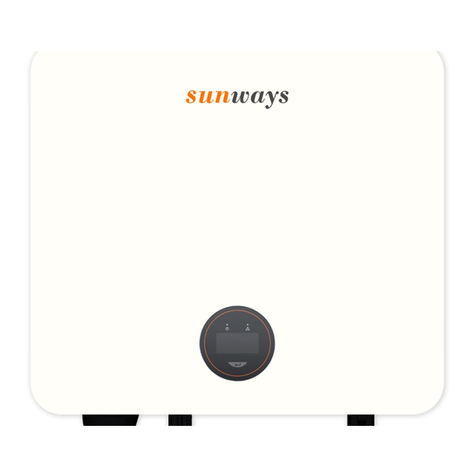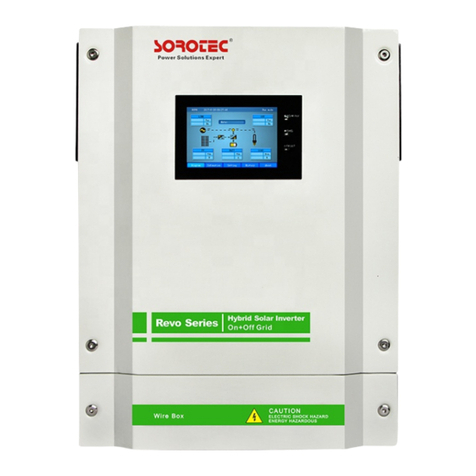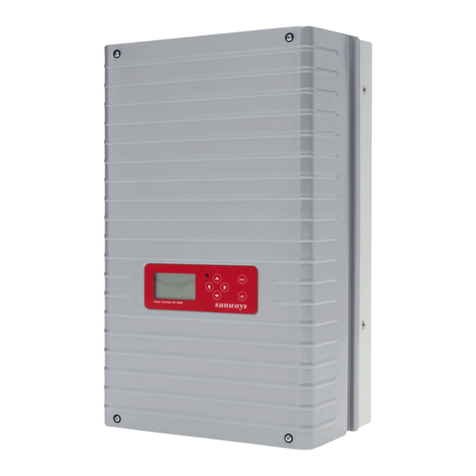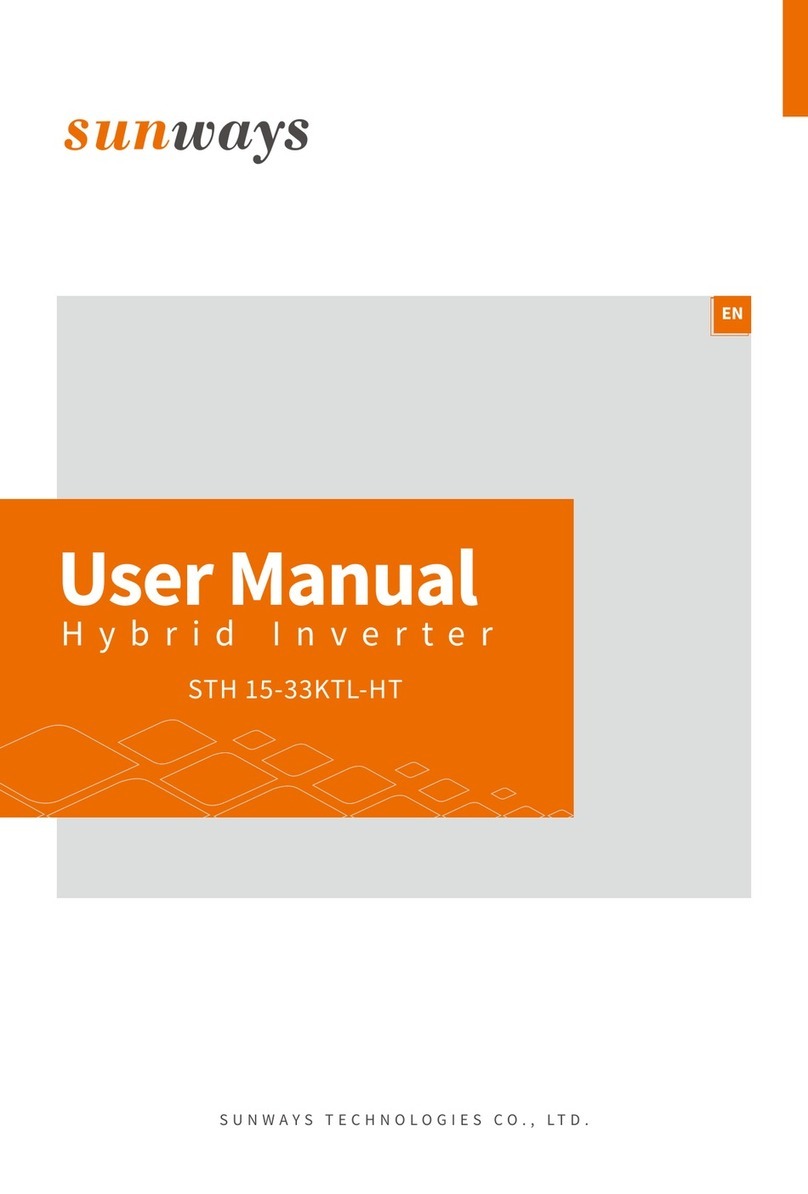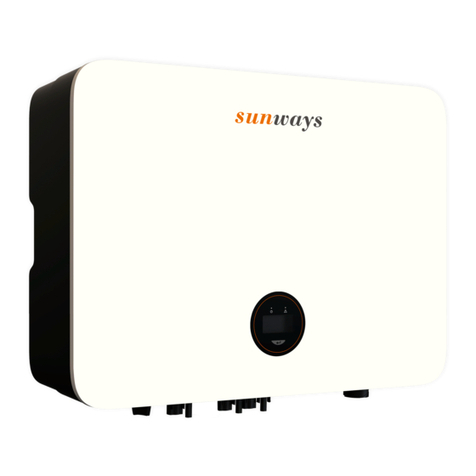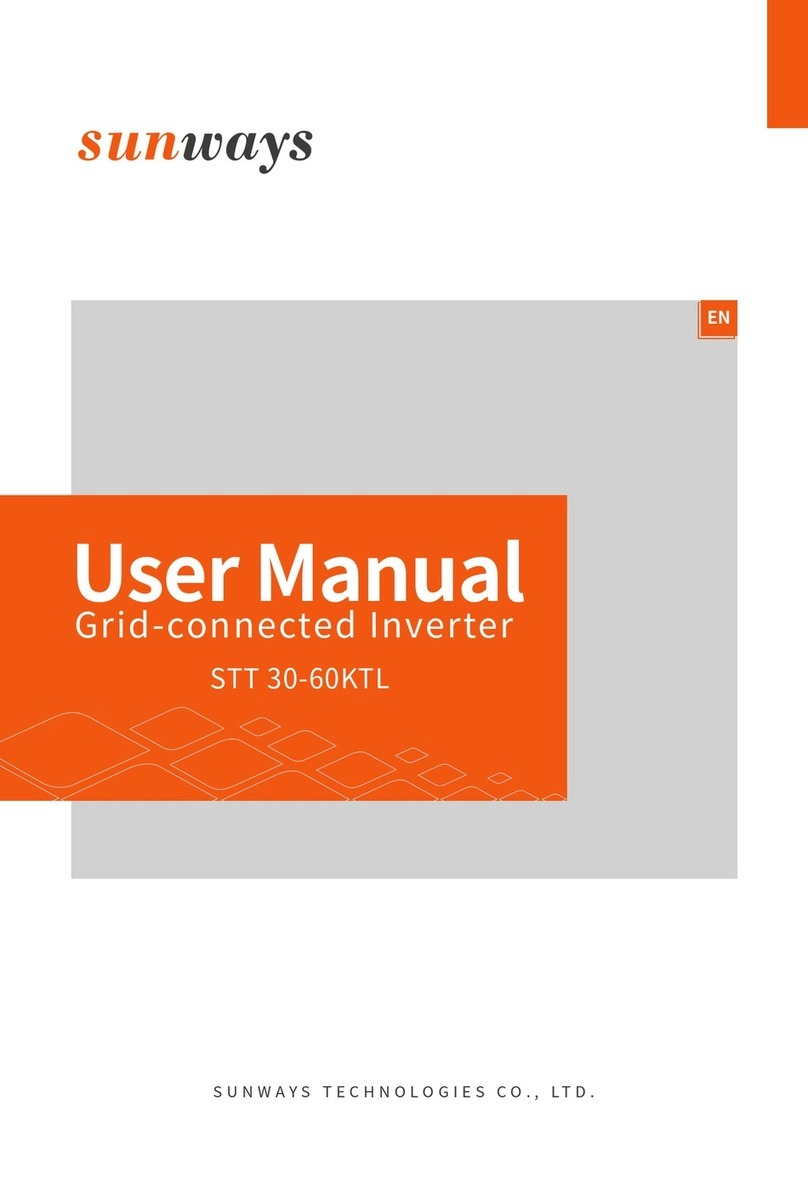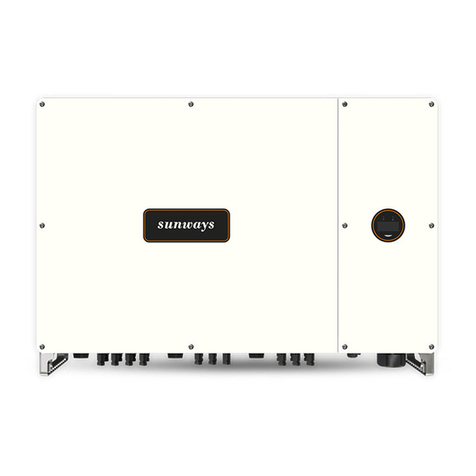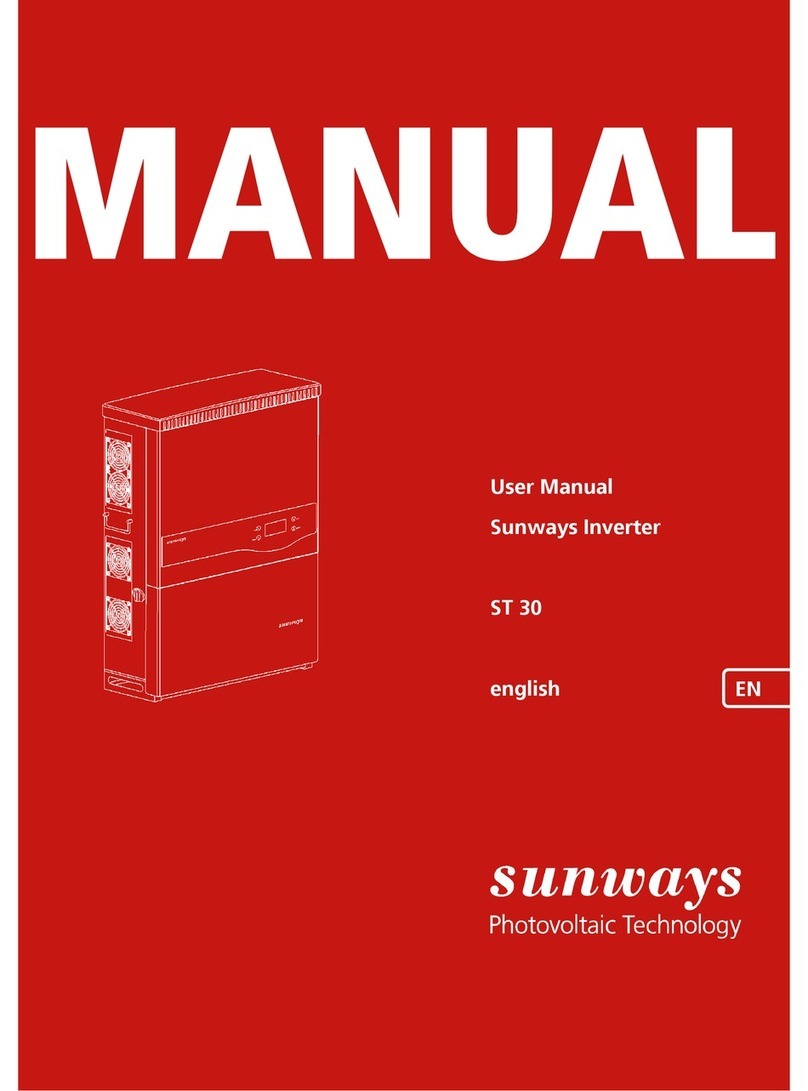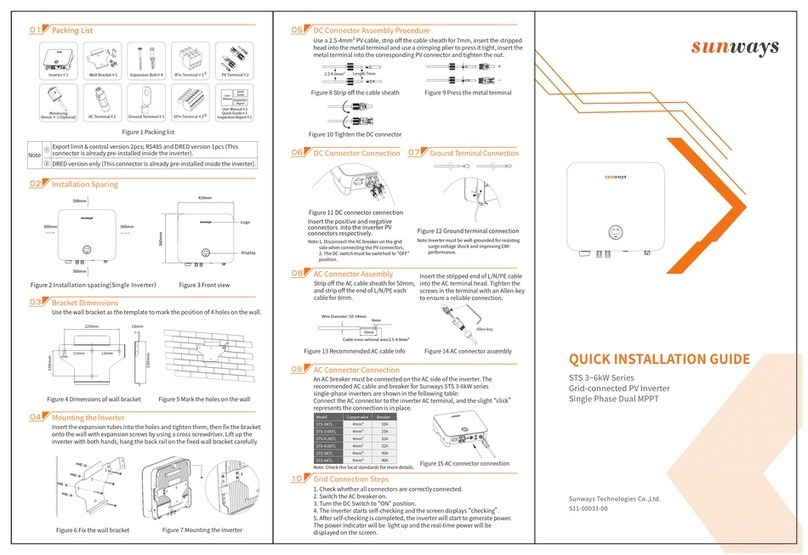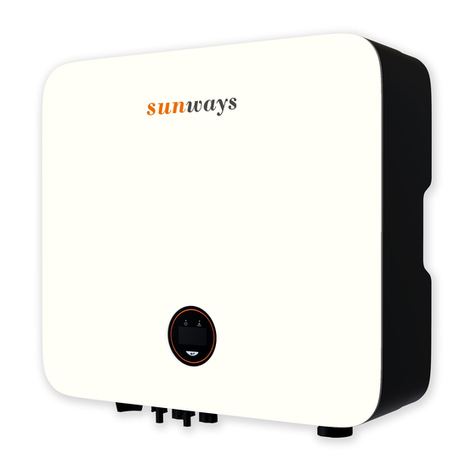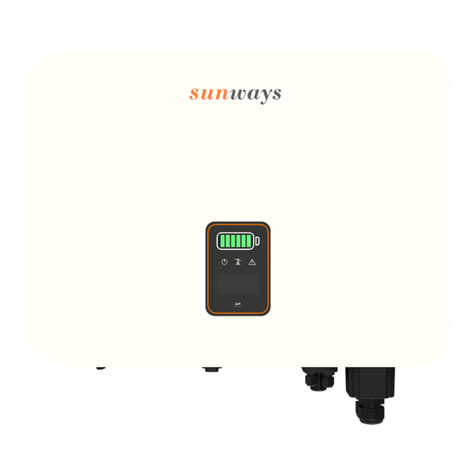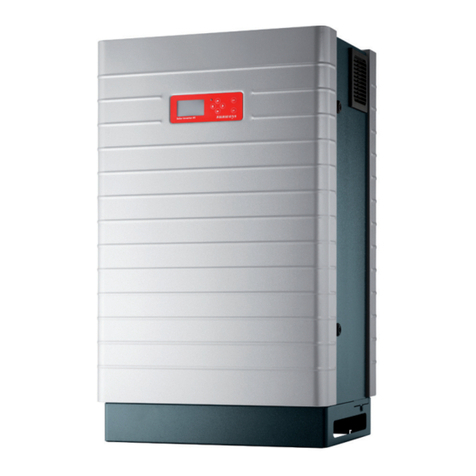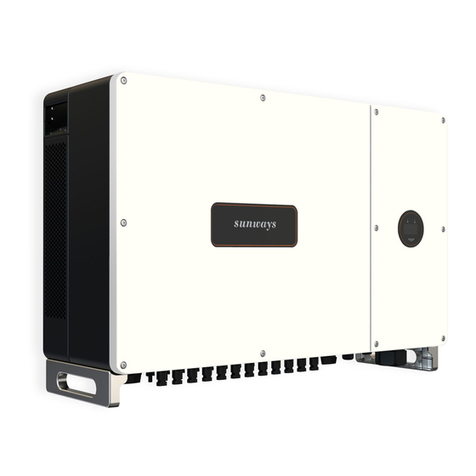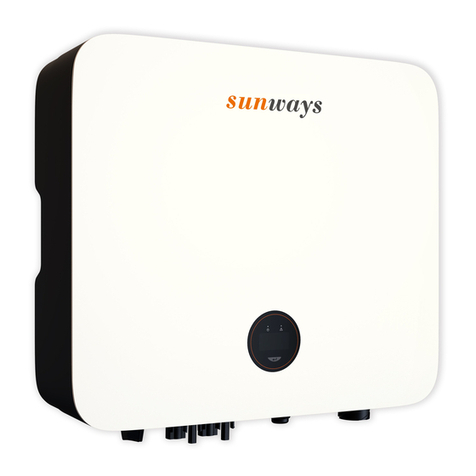
6 7
2 Safety Instructions
※ 2.1 Safety Notes
Before installation, please read this manual and warning labels on battery carefully and
follow the instructions in this manual strictly.
※ 2.2 Important Safety Matters
SAVE THESE IMPORTANT SAFETY INSTRUCTIONS.
STE-BS stackable Li-HV system installation and repair instructions assume knowledge
of high voltage electricity and should only be performed by Sunways certied installers.
Sunways assumes no liability for injury or property damage due to repairs attempted by
unqualied individuals or a failure to properly follow these instructions. These warnings
and cautions must be followed when using our product.
Warning
Read this entire document before installing or using STE-BS stackable Li-HV system.
Failure to do so or to follow any of the instructions or warnings in this document can
result in electrical shock, serious injury, or death, or can damage STE-BS stackable Li-HV
system, potentially rendering it inoperable.
Warning
A battery can present a risk of electrical shock, fire, or explosion from vented gases.
Observe proper precautions.
Warning
STE-BS stackable Li-HV storage system installation must be carried out only by Sunways
Certied Installers, who have been trained in dealing with high voltage electricity.
Warning
The product is heavy and challenging to lift.
Warning
Use STE-BS Battery only as directed.
Warning
Do not use STE-BS Battery if it is defective, appears cracked, broken, or otherwise
damaged, or fails to operate.
Warning
Do not use STE-BS Battery if it is defective, appears cracked, broken, or otherwise
damaged, or fails to operate.
Warning
Do not attempt to open, disassemble, repair, tamper with, or modify STE-BS Battery.
STE-BS Battery is not user serviceable. LFP Cells in STE-BS Battery are not replaceable.
Contact the STE-BS Authorized Reseller who sold the STE-BS Battery for any repairs.
Warning
Do not connect STE-BS Battery to alternating current carrying conductors. STE-BS
storage system including battery and battery must be wired to either a battery or a DC
combiner panel that is then wired to an inverter. No other wiring conguration may be
used.
Warning
STE-BS Battery contains components, such as switches and relays, that can produce arcs
or sparks.
Warning
To protect STE-BS Battery and its components from damage when transporting, handle
with care. Do not impact, pull, drag, or step on STE-BS Battery. Do not subject STE-BS
Battery to any strong force. To prevent damage, leave STE-BS Battery in its shipping
packaging until it is ready to be installed.
Warning
Do not insert foreign objects into any part of STE-BS Battery.
